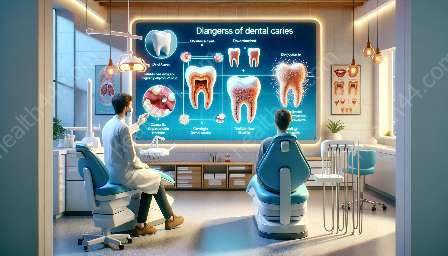Tooth discoloration is a common concern for many individuals, and dentists play a crucial role in diagnosing the underlying causes. Stained or discolored teeth can be indicative of various factors, and understanding the effects of poor oral health is essential in addressing this issue. Here, we will explore the diagnosis of tooth discoloration by dentists and its relationship with stained teeth and the effects of poor oral health.
Understanding Tooth Discoloration
Before delving into the diagnosis, it is important to understand what tooth discoloration entails. Tooth discoloration refers to any deviation from the natural white color of teeth, resulting in stains, spots, or overall discoloration. The causes of tooth discoloration can vary and may include extrinsic factors such as staining from food, drinks, or tobacco, or intrinsic factors like dental trauma, medication, or certain medical conditions.
Diagnosis of Tooth Discoloration
When patients present with concerns about tooth discoloration, dentists perform a comprehensive assessment to diagnose the underlying cause. The diagnostic process may involve:
- Visual examination: Dentists visually inspect the teeth to identify any visible signs of discoloration, such as stains, spots, or changes in tooth color.
- Dental history: Dentists inquire about the patient's dental history, including previous dental treatments, habits, and any relevant medical conditions or medications.
- X-rays: Radiographic imaging may be used to identify internal causes of discoloration, such as dental trauma or abnormalities in the tooth structure.
- Advanced imaging: In some cases, dentists may use advanced imaging technologies such as intraoral cameras or optical coherence tomography to visualize the internal structure of the teeth and identify potential causes of discoloration.
Stained or Discolored Teeth
Stained teeth, often a result of extrinsic factors like coffee, tea, red wine, or tobacco, can lead to tooth discoloration. Dentists evaluate the nature of stains to differentiate between extrinsic and intrinsic discoloration, which guides the treatment approach. Addressing stained teeth may involve professional dental cleanings, teeth whitening treatments, or lifestyle modifications to minimize exposure to staining agents.
Effects of Poor Oral Health
Understanding the effects of poor oral health is vital in addressing tooth discoloration. Poor oral hygiene, inadequate dental care, and certain lifestyle factors can contribute to tooth discoloration and impact overall oral health. Additionally, poor oral health may be linked to systemic health issues such as cardiovascular diseases and diabetes, emphasizing the importance of maintaining good oral hygiene and seeking timely dental care.
Role of Dentists in Diagnosis and Treatment
Dentists play a critical role in diagnosing and addressing tooth discoloration. By identifying the specific causes of discoloration, dentists can develop personalized treatment plans to restore the natural appearance of the teeth and improve oral health. This may involve professional cleanings, teeth whitening procedures, dental restorations, or addressing underlying dental conditions.
Conclusion
Diagnosing tooth discoloration requires a comprehensive evaluation by dentists to identify the underlying causes and develop targeted treatment strategies. By understanding the relationship between stained or discolored teeth, the effects of poor oral health, and the role of dentists in diagnosis and treatment, individuals can take proactive steps to maintain a healthy and vibrant smile.



